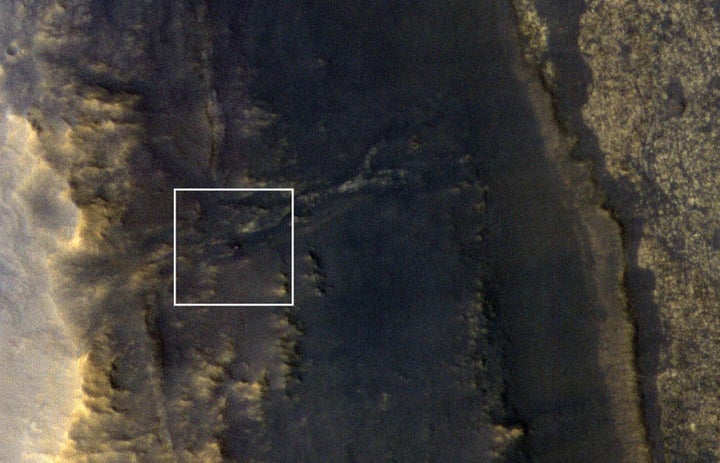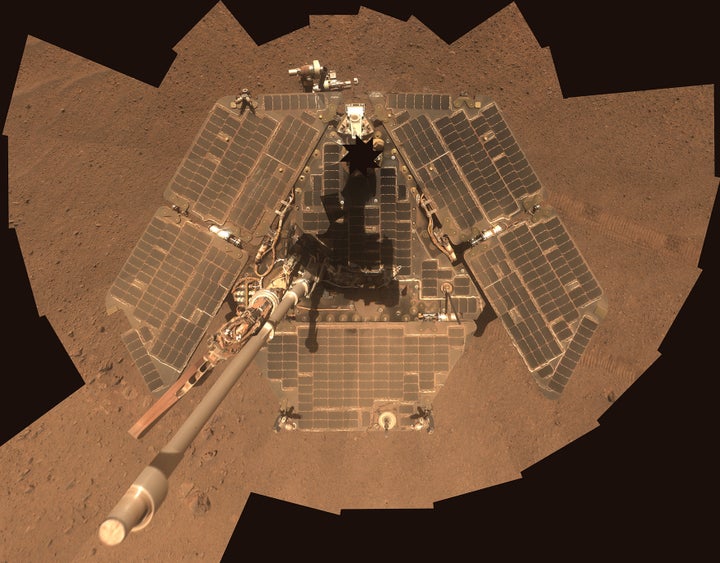After three months of radio silence, NASA’s Opportunity rover has emerged from a massive Martian dust storm, still silent but at least now visible.
The resilient rover has been photographed by NASA’s Reconnaissance Orbiter (MRO) on the Red Planet’s Perseverance Valley where a global storm cut off its solar power, putting it in hibernation mode. NASA has consequently not received a single signal from it since June 10, despite increasing daily attempts to communicate, the space agency said on Tuesday.
“A key unknown is how much dust has fallen on the solar arrays,” NASA said in a release posted on the website for the University of Arizona in Tucson, which operates MRO’s HiRISE camera. “As the dusty sky continues to clear, the frequent commanding will continue and imaging will be repeated.”

At last review, about 25 percent of direct sunlight is reaching Mars’ surface, the agency said.
An animated image released by NASA and seen here shows the amount of dust covering the rover’s location today compared to one Martian year ago, which is 687 Earth days.
“Aside from the rover (only in the new image), the color and albedo patterns are very similar, so an optically thick layer of dust has not been deposited over the region,” the agency said.
The storm had been described as the most intense ever observed on Mars, with it at one point covering more than 15.8 million square miles, or roughly the area of North America and Russia combined, NASA said in June.

NASA will continue its listen for signals from the 14-year-old rover at least into early 2019, CNET reported.
Opportunity has been exploring Mars since 2004, despite it only expected to operate for 90 Martian days. Its twin rover, Spirit, also landed on Mars in 2004 but ceased operations after 2,210 Martian days, according to NASA.
Opportunity’s main mission is to assess the planet’s geology and past habitability at two Martian sites where there is preserved evidence of past and persistent water.
Should Opportunity wake up from its hibernation, it could take several weeks or communication sessions before engineers receive enough information to determine the next course of action, NASA said. The agency compared the rover’s wakeup to coming out of a coma, stating, “It takes time to fully recover.”
The rover’s team will then do a scan of its battery, solar cells, temperature and will attempt to review the amount of dust that may have become caked inside of it.
“Once they’ve gathered all this data, the team would take a poll about whether they’re ready to attempt a full recovery,” NASA said.